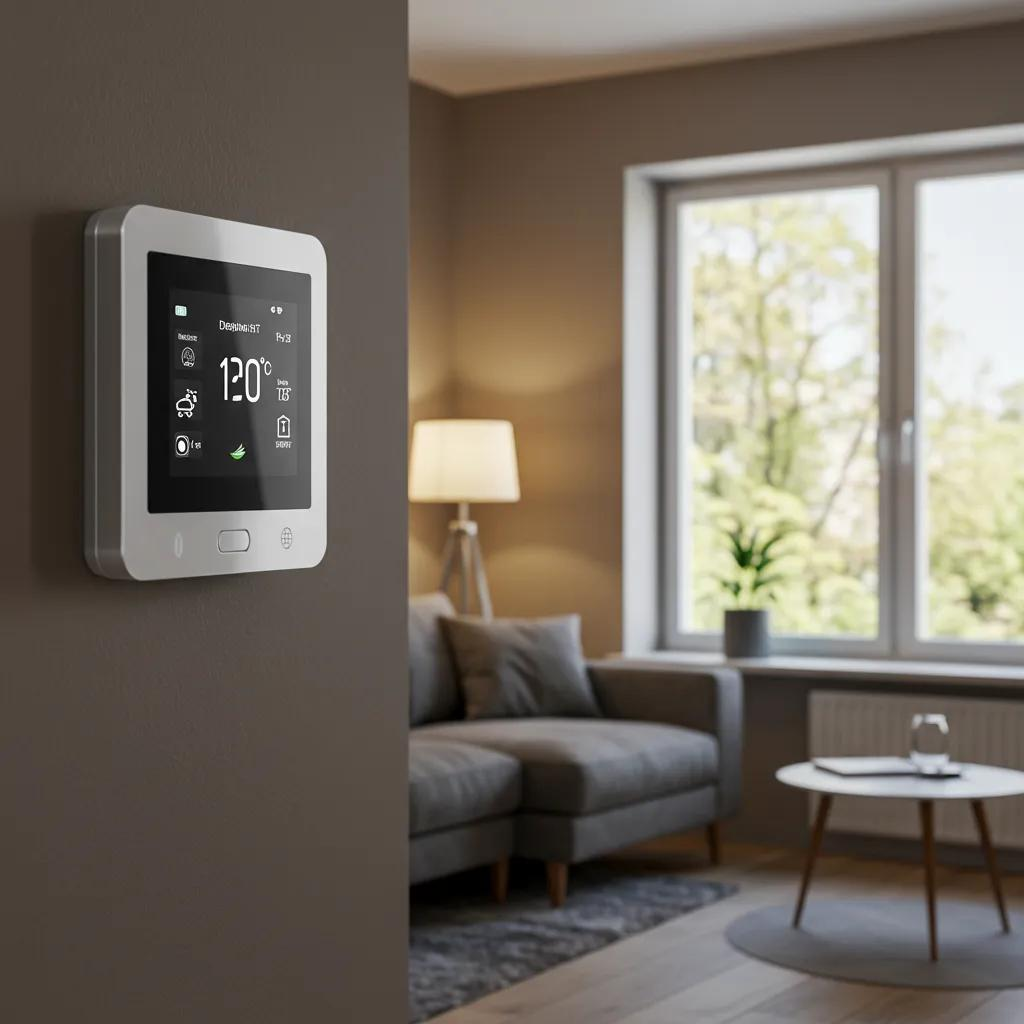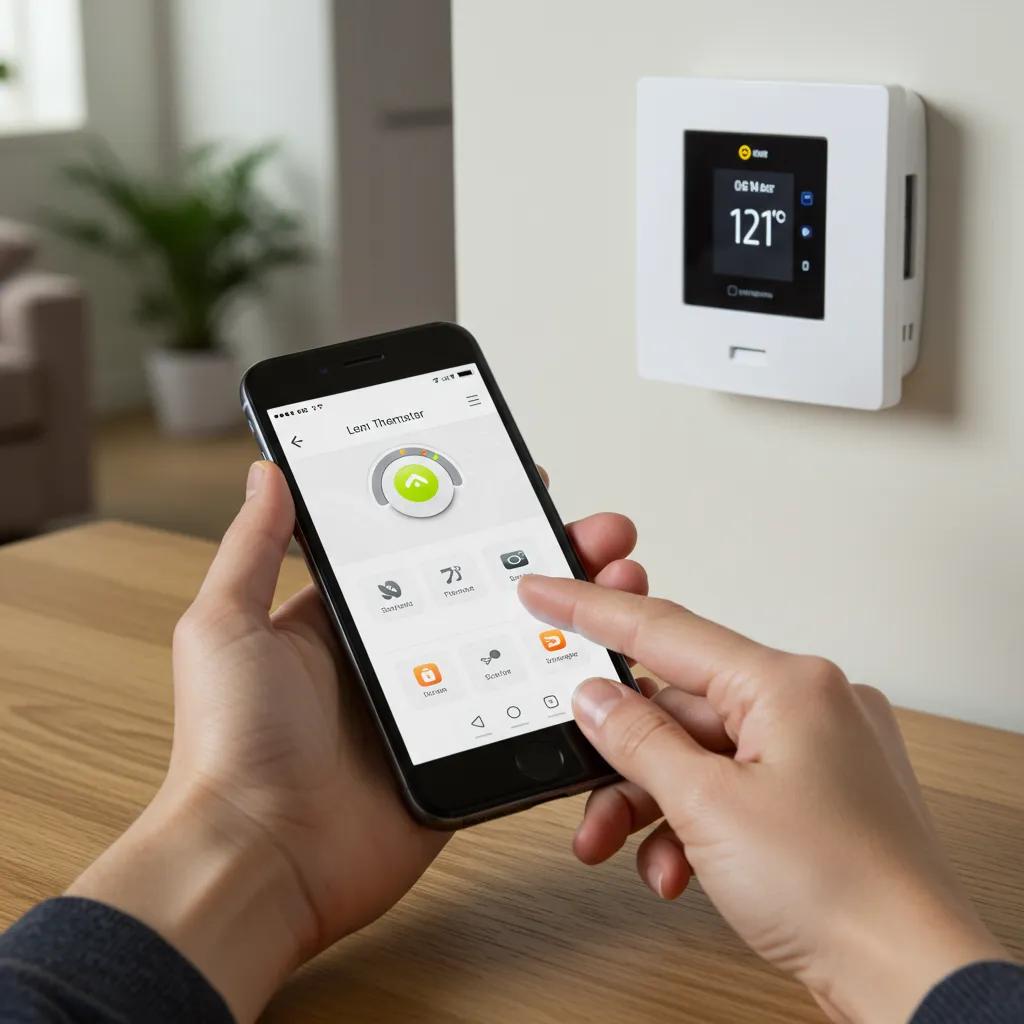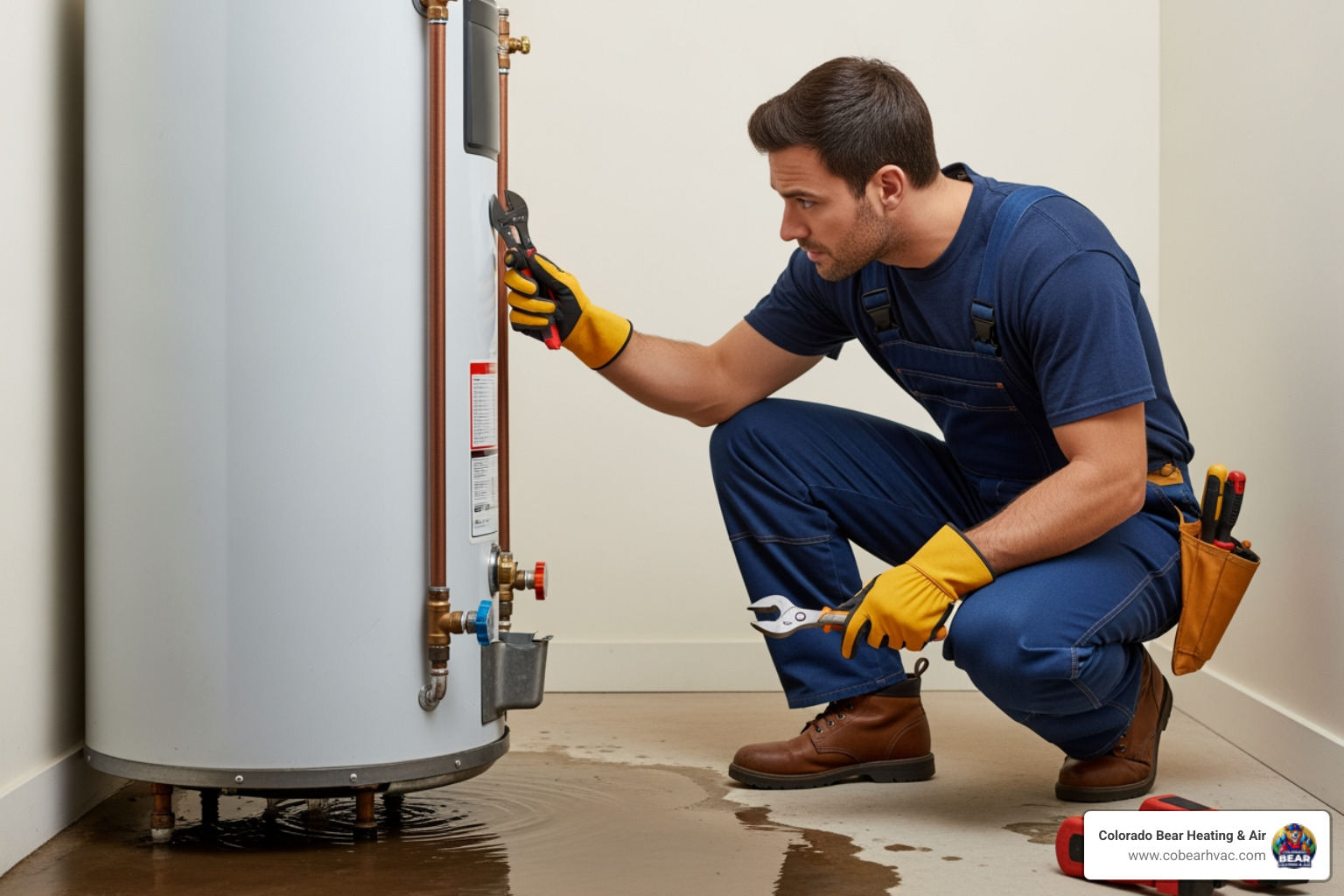


Smart Thermostat Benefits: Slash Energy Use, Cut Heating Bills, and Boost Home Comfort
Smart thermostats are intelligent heating controls that learn your household's patterns, automate schedules, and optimize your HVAC system's runtime to deliver significant energy savings, lower heating bills, and more consistent home comfort. This guide dives into how smart thermostat features like learning algorithms, geofencing, scheduling, and occupancy sensing work together to cut energy waste and enhance comfort for Colorado homes. You'll discover estimated savings for the Denver Metro Area, the key differences between programmable and true smart thermostats, comparisons of popular brands (including Nest and Hive), and crucial considerations for system compatibility, especially with units like Daikin. We'll also cover when it's time to call a professional. Plus, explore the advantages of remote control, multi-zone strategies, how they interact with indoor air quality, and common homeowner questions about costs and potential drawbacks. With practical lists, compatibility charts, and step-by-step guidance, you'll easily determine if a smart thermostat is the right upgrade for your home and how to proceed with installation or a free estimate.
How Do Smart Thermostats Deliver Energy Savings for Your Home?
Smart thermostats achieve energy savings by intelligently combining automated scheduling, occupancy sensing, and adaptive learning to minimize unnecessary HVAC runtime while still maintaining your desired comfort levels. These devices utilize sensors and sophisticated algorithms to adjust temperature settings based on whether someone is home, outdoor conditions, and your learned routines. This significantly reduces the operational time for your furnace and heat pump, leading to lower fuel and electricity consumption. The end result? Reduced heating bills and more efficient system operation, all without constant manual adjustments.
Here’s a breakdown of the core energy-saving features:
- Learning Algorithms: The thermostat analyzes your occupancy and temperature preferences to create a custom schedule that automatically minimizes runtime.
- Geofencing / Occupancy Sensing: Using your location and motion detection, the system automatically adjusts to an energy-saving mode when your home is empty.
- Adaptive Recovery: This feature ensures your home reaches the desired temperature efficiently before you arrive, using less total energy than prolonged heating or cooling periods.
These features work in harmony to reduce runtime and ensure comfort precisely when and where it's needed, naturally leading to lower energy consumption and costs. Understanding these mechanisms helps you choose the best heating services and installation approaches for your home's specific heating needs.
Different smart thermostat features contribute to energy savings through distinct mechanisms and outcomes.
FeatureMechanismEnergy EffectLearning algorithmsAnalyzes usage patterns to build and adapt schedulesMinimizes wasted runtime by automating temperature setbacksGeofencing / occupancy sensingAdjusts temperature settings when the home is unoccupiedReduces heating hours and peak energy demandAdaptive recoveryPre-heats or pre-cools efficiently before occupancyResults in shorter run times and fewer temperature overshoots
What Features Enable Smart Thermostats to Reduce Heating Bills?
Smart thermostats reduce heating bills through specific capabilities designed to target unnecessary operation and optimize system performance. Learning algorithms automatically create temperature schedules by observing when occupants wake, leave, or sleep, and they adapt as your routines change. Geofencing uses your smartphone's location to automatically switch the house to an energy-saving mode when everyone is out and restore comfort before you return. Energy reporting and usage insights highlight trends and suggest adjustments, empowering you to change habits and compound savings over time. These combined features reduce both fuel consumption for furnaces and electricity use for heat pumps by eliminating unnecessary runtime and minimizing inefficient cycles.
These mechanisms perform best when the thermostat is paired with accurate sensors and configured correctly. Proper setup is crucial to avoid learning inefficient habits, which underscores the importance of initial configuration and occasional manual tuning to refine savings over time.
How Much Can You Save Annually with a Smart Thermostat in Denver Metro Area?
Smart thermostats typically save 10–15% annually on heating and cooling energy through optimized scheduling, occupancy sensing, and adaptive recovery. Local factors can refine this range for Denver Metro Area homes. Colder winters mean more heating hours, so a well-configured smart thermostat on a modern gas furnace in a well-insulated home might achieve the higher end of this range. Conversely, older, poorly maintained systems or homes with significant heat loss will see smaller percentage gains, though they will still benefit from improved control and reduced runtime. Your household's behavior, system type (furnace vs. heat pump), and thermostat placement all influence actual savings.
Estimating savings for a specific home requires considering fuel type, insulation levels, and occupancy patterns. This is why recorded usage reports and periodic tuning are valuable for tracking realized returns and optimizing performance across seasons.
What Are the Key Advantages of Remote Heating Control with Smart Thermostats?

Remote heating control gives you real-time command over your home's temperature, schedules, and alerts directly from your smartphone or a web interface, enhancing convenience and reducing wasted energy. Smartphone control allows for immediate overrides, activation of pre-set scenes (like "away" or "bedtime"), and access to energy reports that reveal usage patterns and opportunities for cost reduction. Integrations with voice assistants enable hands-free adjustments, while multi-zone strategies let you heat only occupied areas, improving comfort and lowering bills. Together, these capabilities offer greater control granularity and enable proactive system management rather than reactive thermostat adjustments.
Use cases and app features make remote control practical and time-saving for busy households. The next section explains common smartphone features and how they translate to everyday convenience.
Smartphone control improves your heating experience in several practical ways:
- Remote adjustments: Change temperatures from anywhere to avoid unnecessary heating when you're away.
- Alerts and maintenance reminders: Receive notifications for filter changes or abnormal system runtime.
- Energy insights: View historical usage data to refine your habits and schedules for better efficiency.
These app features reduce friction and help you maintain efficient operation without constant manual monitoring, leading into discussions about zoning and multi-room control strategies.
How Does Smartphone Control Improve Your Heating Experience?
Smartphone control centralizes your thermostat management and transforms energy management into actionable insights that fit seamlessly into your daily life. Remote adjustments prevent heating an empty house, while energy reports help identify unusual runtime that might signal maintenance needs or inefficient habits. Push notifications for extreme temperatures or system alerts allow for quick intervention before problems escalate, and easy schedule edits accommodate irregular routines. For occupants who travel or work non-traditional hours, smartphone control ensures comfort upon arrival without continuous heating while away.
By making control accessible from anywhere, smartphone interfaces effectively bridge household behavior with automated features, paving the way for targeted multi-zone strategies that enhance both comfort and efficiency.
Can Voice Control and Smart Home Integration Simplify Heating Management?
Voice control and smart home integrations allow you to manage your heating with simple spoken commands and automated routines, making everyday adjustments faster and more accessible. Integration with ecosystems like Google Assistant or Amazon Alexa enables routines such as "away mode" or "goodnight" that adjust multiple devices in concert, saving energy and enhancing convenience. Security and privacy settings are important considerations; limiting voice command access and reviewing data-sharing options will protect your household information. Automations can also be triggered based on occupancy sensors, weather forecasts, or sunrise/sunset times to align comfort with efficiency.
These automations reduce friction for energy-saving behaviors and enable coordinated control across your home devices, which naturally complements the learning functions built into many smart thermostats.
Which Popular Smart Thermostat Brands Offer the Best Features for Colorado Homes?
Popular smart thermostat brands differ in their learning sophistication, ecosystem compatibility, and heat-pump optimization—attributes that are particularly important for Colorado's heating patterns and local HVAC brands. Nest thermostats excel in learning algorithms and energy reports, while Hive and others focus on ecosystem integration and straightforward scheduling. Programmable thermostats offer manual schedule control without advanced learning capabilities. For Colorado homes with heat pumps or Daikin systems, selecting a model with explicit heat-pump and multi-stage support is crucial. Below is a concise brand comparison to help homeowners match thermostat features to local needs and system types.
When choosing a brand, homeowners should consider learning capability, compatibility with heat pumps, and ease of app use. Colorado Bear Heating & Air can provide expert advice on brand selection and offer brand-specific installation and setup to ensure optimal integration with your local HVAC equipment.
BrandKey FeatureBest For (use case)NestLearning algorithms and energy reportsHomes seeking automatic schedules and insightful dataHive / Ecosystem-friendly brandsSimple app control and voice integrationUsers prioritizing smart home compatibility and ease of useProgrammable thermostatManual scheduling without smart featuresBudget-conscious households with predictable daily routines
What Are the Differences Between Programmable and Smart Thermostats?
Programmable thermostats allow homeowners to set fixed schedules for different times of day but lack the adaptive learning, occupancy detection, and remote analytics found in smart thermostats. Programmable units are often simpler and more affordable; they rely on manual schedule edits and do not automatically adapt to changing routines. Smart thermostats add learning algorithms, geofencing, remote control, and energy reporting, which can generate additional savings for dynamic households. The choice depends on your household's predictability, desired level of automation, and whether integration with heat pumps or zoning is a priority.
For many Colorado homeowners, a smart thermostat's advanced intelligence and remote control capabilities justify the higher initial investment by delivering ongoing operational improvements and valuable energy insights.
How Does Professional Smart Thermostat Installation Ensure Compatibility and Performance?
Professional installation guarantees correct wiring, configuration, and testing, ensuring your smart thermostat operates reliably with your specific HVAC system and delivers the predicted energy savings. Installers verify the presence of a C-wire or provide power-extender solutions, confirm multi-stage and heat pump settings, configure fan and auxiliary heat controls, and validate app connectivity and automation. Proper commissioning prevents issues like short cycling, incorrect stage activation, or incompatible wiring that can reduce efficiency or even damage your system. Below is a compatibility matrix that maps common system types to essential installer checks and actions.
A systematic installation and commissioning process minimizes post-install troubleshooting and maximizes long-term performance for both comfort and savings.
System TypeCompatibility AttributeInstaller Action / CheckSingle-stage furnaceC-wire / power availabilityVerify C-wire or install power adapter; configure heat stagesHeat pump / DaikinControl protocol and defrost stagingConfirm heat pump mode settings and set auxiliary heat thresholdsMulti-zone systemsThermostat-to-zone controller mappingTest dampers/valves and pair thermostats to the correct zones
Why Choose Colorado Bear Heating & Air for Your Smart Thermostat Installation?
Colorado Bear Heating & Air proudly serves the Denver Metro Area, Colorado Springs, and Castle Rock with comprehensive HVAC services, including heating, air conditioning, heat pumps, and indoor air quality solutions. We are committed to honesty, integrity, and expert craftsmanship in every job. Our services include free estimates, emergency HVAC repairs, and flexible financing options like "18 Months, Same as Cash!", helping homeowners move forward with upgrades without delay. Our partnership experience with manufacturers like Daikin ensures smoother integrations for heat pump services and precise, brand-specific configuration. For homeowners seeking a local installer that combines technical expertise with clear service pathways, our approach simplifies the upgrade process.
This local expertise complements the technical checks described earlier and provides homeowners with reliable follow-through from initial assessment to final commissioning.
How Can Smart Thermostats Improve Indoor Air Quality and Overall HVAC Efficiency?
Smart thermostats indirectly improve indoor air quality (IAQ) by optimizing runtime, reducing short cycling, and providing maintenance reminders that encourage timely filter changes and servicing. By running systems on schedules that complement HVAC design, thermostats minimize extremes that can increase particulate disturbance or humidity swings. Regular maintenance alerts and performance reports help homeowners address filter replacement and system issues before they degrade IAQ. These combined effects increase overall HVAC efficiency and can extend equipment life by reducing unnecessary wear from frequent cycling.
What Role Do Smart Thermostats Play in Optimizing Heat Pumps and Air Conditioning?
For heat pumps and air conditioning, smart thermostats manage staging, balance defrost cycles, and prevent short cycling by enforcing minimum run times and correct staging thresholds. Properly configured thermostats ensure compressors aren't repeatedly turned on and off, which improves efficiency and reduces mechanical stress. Features that consider outdoor temperature and adaptive recovery help systems reach setpoints efficiently without overshooting and wasting energy. When advanced tuning is required, professional commissioning adjusts control parameters to match the specific heat pump model and local climate patterns for optimal performance.
These optimizations reduce runtime and support longer system life while maintaining occupant comfort through smarter control strategies.
Can Smart Thermostats Help Detect and Prevent HVAC System Issues?
Smart thermostats can surface early warning signs through alerts for unusual runtime, rapid cycling, or failure to reach setpoints; these diagnostics help homeowners and technicians prioritize maintenance. Runtime analysis and fault alerts can indicate potential problems like clogged filters, refrigerant issues, or failing components, prompting timely service. When alerts suggest urgent repair—such as persistent short cycling—contacting a technician for assessment can prevent more severe damage. Clear notification pathways and energy reports make smart thermostats valuable monitoring tools that complement routine professional maintenance.
These detection capabilities underscore the value of pairing intelligent controls with professional servicing to preserve efficiency and prevent failures.
Why Is Upgrading to a Smart Thermostat a Smart Investment for Colorado Homeowners?
Upgrading to a smart thermostat delivers long-term benefits including ongoing energy savings, improved comfort, enhanced equipment longevity, and actionable data for maintenance and future upgrades. Local case studies and measured outcomes often show real savings approaching the expected percentage range when the thermostat is professionally installed and the home's envelope and equipment are in reasonable condition. Smart thermostats also enable better participation in utility programs and facilitate staged upgrades like zoning or heat pump optimization that multiply returns. The final step for homeowners is to secure a tailored assessment and, if appropriate, schedule installation to capture both immediate comfort and long-term ROI.
Below are brief local case summaries illustrating measured savings and the practical outcomes that homeowners can expect when upgrades are performed with professional support.
How Do Local Case Studies Demonstrate Real Energy Savings?
Short local case summaries showcase measured savings after installation and tuning: for example, a single-family home in the Denver suburbs reduced HVAC runtime by adopting setback schedules and occupancy control, realizing seasonal heating savings near the expected range once the thermostat was correctly configured. Another Castle Rock retrofit that combined a smart thermostat with improved insulation and filter maintenance saw compounded reductions in energy use and improved comfort on cold nights. These anonymized examples demonstrate that smart thermostats are most effective when paired with good system health and attention to installation detail.
Real-world case outcomes reinforce that the device alone is valuable, but combined upgrades and professional commissioning provide the strongest returns.
What Long-Term Benefits Can You Expect from Smart Thermostat Technology?
Over the years, homeowners can expect steady energy savings, clearer maintenance scheduling, improved comfort consistency, and data that informs future upgrades such as heat pump enhancements or zoning additions. Continuous insights into runtime patterns allow homeowners to track incremental improvements and validate return on investment. The control and automation also reduce daily friction and help households adopt energy-conserving behaviors that compound savings across seasons. Collectively, these benefits contribute to a more efficient, comfortable, and resilient home.
Tracking these outcomes over time supports data-driven decisions on further efficiency investments and system upgrades.
How to Request a Free Estimate or Schedule Smart Thermostat Service with Colorado Bear Heating & Air?
To get a tailored assessment and explore installation or financing options, request a free estimate or schedule service with Colorado Bear Heating & Air by using our online booking tools or contacting our local office for service in the Denver Metro Area, Colorado Springs, and Castle Rock. We offer free estimates, emergency HVAC repairs, and financing options including "18 Months, Same as Cash!" to support your upgrade without delay. During a free estimate, a technician will perform a compatibility check, discuss brand and feature choices (such as Nest or ecosystem-friendly models), and outline any required wiring or adapter work to ensure reliable integration.
Taking this step provides a clear, locally relevant pathway from evaluation to professional installation and ongoing support, helping homeowners capture both comfort and savings.
Latest blogs

Apply now for flexible payment options
Get a decision in seconds with no impact to your credit score.



Testimonials
Service Areas
If you’re in Colorado Springs, The Mountains, or nearby areas, call us to confirm availability for installations.
.avif)















.avif)
.avif)
.avif)





